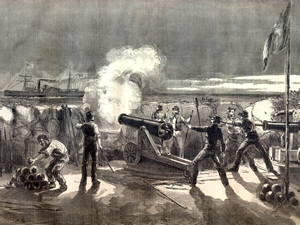Sun 9 Jan, 2011
The Civil War begins
Comment now Filed under: Civil War 150th, History| Tags: Charleston S.C., Civil War sesquicentennial, Fernando Wood, Fort Sumter, Tracing Center, U.S. Civil War |
 Today is the 150th anniversary of the outbreak of the U.S. Civil War.
Today is the 150th anniversary of the outbreak of the U.S. Civil War.
On January 9, 1861, shore batteries in Charleston, South Carolina opened fire on the steamer Star of the West as that merchant ship attempted to reach Fort Sumter with fresh troops and supplies. The Star of the West was hit and forced to retreat, setting the stage for a wider conflict to break out in April, when Fort Sumter would run out of food and be forced to surrender if not reinforced.
